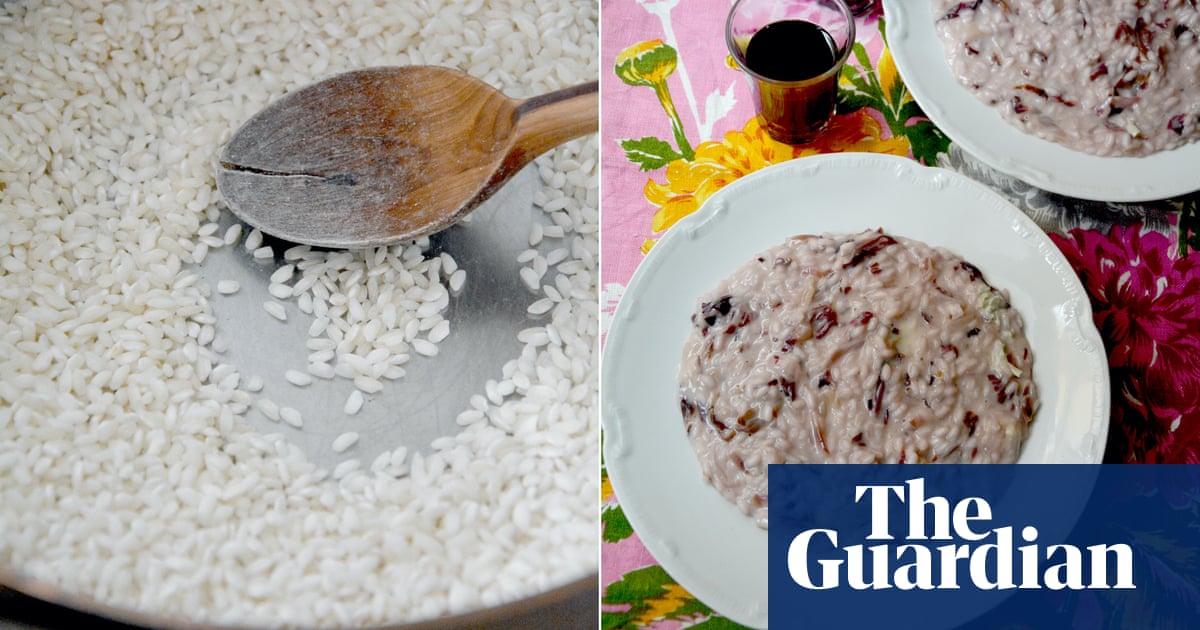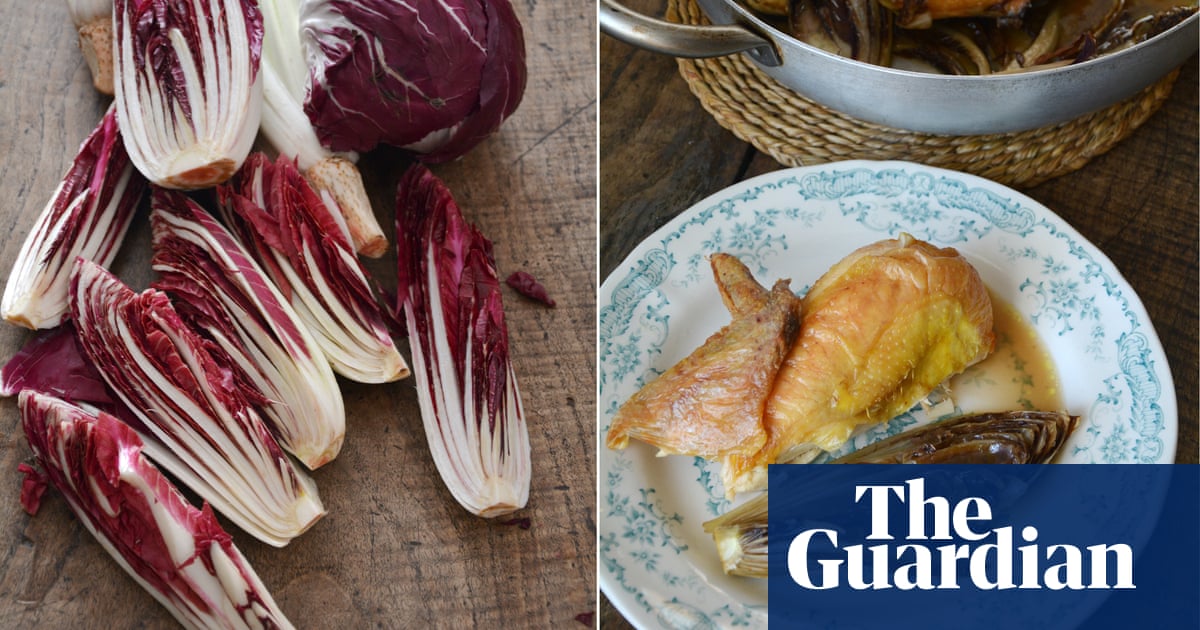
The outline of Lake Maggiore looks like a dog: a spaniel with no front legs that’s standing on its hind ones. The head of the dog is in Switzerland. The rest – long neck, lean body, happy tail and legs – is in Italy and divided lengthways: half of the lake is in the region of Piedmont, the other in Lombardia. A friend, Francesca, lives in Colazza, a village behind the ankle in Piedmont. On the other side of Colazza, cradling it almost, is much smaller Lake Orta, which looks like a tadpole.
All this is written at my desk with a map. Dogs and tadpoles didn’t come to mind when Francesca took me to Lake Maggiore on a clear morning last December. Spread before us, it looked like a vast mirror: sublime and as if it might swallow us up. Colazza is on a hill (colle) , a possible reason for its name. Another hypothesis is the word colare, meaning to filter or drip, for the movement of countless natural springs. All this to say, there is water everywhere, and the reason thatthe “rice triangle” begins a few miles south, in an area between the provinces of Novara and Vercelli that accounts for 50% of Italian rice production.
Water gives Francesca Settimi’s cooking school, Cook On The Lakes, its name. An architect before she qualified as a pastry chef at Cordon Bleu in Paris, then chef and rice sommelier, Francesca now concentrates on her synergistic vegetable garden and on teaching with what she grows. I couldn’t write this column, or about Italian food at all, without teachers such as Francesca, who also lent me her best slippers. December was all about rice. I brought a tin from a maker called Acquarello and Francesca had a packet from Cristiana Sartori. Both were great, and both carnaroli, which is a variety developed in the 1940s by crossing vialone and lencino. The reason for persevering with long and challenging carnaroli is the nature of its mother-of-pearl grains. Fragrant and sodo (firm), they hold their shape while releasing the starch that is so welcome in risotto.
Francesca made me her five-ingredient teaching risotto: rice, water, salt, cheese and butter. First, she toasts the rice in a dry pan, which isn’t to brown but to liberate the scent – like buttered crumpets – and seal for even better shape-holding and steady starch release. She then adds water and stirs while I stare into the pan and watch how, uncomplicated by anything else, starch seeps out and thickens. She adds salt mid-cooking and, at the end, very cold butter and cubed Castelmagno cheese, which, as she beats it in, binds.
I have made many risottos, and thought I knew the language and process well. But seeing it stripped back to this elemental level was like being shown how to use a key in a temperamental lock. “From this point,” Francesca said, “I could build.” That is, add butter and onion, wine, stock, vegetables – but never lose sight of toast, steep, beat.
At Francesca’s table, her two sausage dogs were far too well trained to jump up. Back home in Rome, however, my spaniel is not well trained, so we had a reminder of Lake Maggiore while eating our risotto.
Risotto with radicchio and gorgonzola
Serves 4
320g carnaroli rice
Salt
1½ litres light stock, or water
1 small onion, peeled and finely diced
50g butter
1 head of radicchio, cut into ribbons
125ml white wine
120g gorgonzola dolce
Work in a heavy-based or deep saute pan on a medium-low heat. Warm and gently toast (but don’t brown) the rice by pushing it around the pan with a wooden spoon – the key here is the smell, so lean in to check for a toasted rice scent – then tip the rice on to a plate.
Put the stock or lightly salted water in a pan at the back of the stove and bring to a simmer.
Back in the rice pan, gently sweat the onion in half the butter until soft and translucent. Add the rice, stir so grains are coated, then add half the radicchio and stir again. Raise the heat and add the wine, which will bubble, then stir until incorporated.
Look at the time and start adding the liquid ladle by ladle, stirring to incorporate each one before adding the next. After about 15 minutes, when the rice is a few minutes from being done, add the rest of the radicchio. Keep tasting: it’s ready when the rice is plump and the consistency fluid but creamy. Pull off the heat, wait 30 seconds, then add the rest of the butter and the gorgonzola and beat well.












